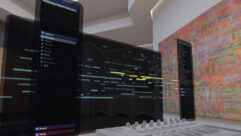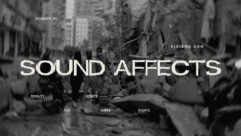FIRST AID
Jul 1, 2000 12:00 PM,
Eddie Ciletti
Quick and easy solutions to some of the problems encountered when connecting digital audio equipment.
In June, I provided an overview of analog interface problems. The short story is that hums, buzzes and RFI/TVI are pin-1 issues. Trace what happens to the shield connection, no matter whether it is XLR pin-1 or the sleeve of either a inch or RCA jack. A device’s sensitivity to the aforementioned (common mode) interference is easily resolved by making sure shield directly goes to chassis and not by any other route.
Bad analog gear hums when it is unhappy, an annoying but useable gray area. Digital audio is more black and white – it either works or it does not – a journey to the gray meaning big trouble. Nothing is more disruptive than digital confusion at 0 dB-FS. Like analog, glitches can be correlated to power-related noises infiltrating data transmission – digital is just a little harder to troubleshoot because there are no hums and buzzes to provide advance warning.
As a rule, digital gear is more immune to noise than some analog gear. The same rules regarding the pin-1 issue apply and are more strictly adhered to in the digital domain. Fiber-optic I/O does not eliminate the potential for common-mode interference because it is rarely used as the sole I/O connection. Noise entering the system via copper can contaminate the fiber receiver’s amp. So much for galvanic isolation.
System testing
Test equipment is not cheap, and with modern technology, it does little more than confirm the suspicion of guilt. There is little that we can do to fix hardware or software problems as they affect digital I/O or the analog I/O via converters. That is why, in the coming months, test equipment will be acquired to answer some of my own questions and, hopefully, some of yours. Tests will include creating hostile environments to determine the window of tolerance of good and bad gear plus monitoring status flags to determine if all of a product’s data stream components are in agreement.
Send e-mail to [email protected] detailing the products that interface well along with those that do not, and I will attempt to collect schematics of receiver circuitry for comparison purposes. Please include documentation if you have already initiated a dialog with product support personnel. Manufacturer cooperation is not only encouraged, but will also be essential to this process, especially if there are fixes for known problems that need to be distributed. The same offer goes out to IC manufacturers. Perhaps together we can resolve some issues.
Tracking down and resolving interference is a party compared to the issues raised by golden-ear types who claim the ability to hear cable and other forms of clairvoyance. Incidentally, you will find a do-it-yourself jitter test in “DIY Jitter Test,” page 56. Now, do not get me wrong. I applaud people with keen, well-trained ears, but let’s put the cart behind the horse.
Building a digital converter is not only about the A-to-D and D-to-A, but also all of the stuff in between. In interviews with several manufacturers, I have been told that digital receiver circuitry is the primary cause of unhappiness. Add bad (long-distance) cabling and a hostile environment for a deadly combination, certainly more challenging than interfacing two analog devices with pin-1 issues.
Even some well-bred digital converters can suffer from poor receiver implementation, serving as a form of test equipment by way of their own narrow window of tolerance. Fixing a digital problem starts with a call to the manufacturer, but in order to be taken seriously, the installer or technician must invest a considerable amount of time for troubleshooting, comparative analysis and documentation as well as tools and test equipment. That is quite an amount of work just to get the right people to listen, but it is worth it if the manufacturer takes your lead or, worst case, you learn what gear not to use on a future installation.
One of the obstacles to resolving highly technical issues regards the location of the brain trust. Some products are developed by geeks for hire, others in-house and many out of this country. Bringing the team back for another round requires an acknowledgement of the numbers – good sales (past) and the promise of continued strong sales (future). Product life is short; quite often, the best we can hope for is a fix in the next product cycle. I have often suggested that user-groups band together and offer the manufacturer money to implement common goals. To my knowledge, no one has ever pursued this line of thought.
Trickle up
There was a time when advances in professional technology trickled down into consumer toys. That is not always the case today. Case in point is the 24 bit converter. The rule-of-thumb formula for turning bits into dynamic range is N bits times 6 dB. Hence, 16 bits infinity 6 dB = 96 dB, 20 bits infinity 6 dB = 120 dB, and 24 bits infinity 6 dB = 144 dB. Look at most mic preamp specs and you will see that the best analog can do is 130 dB. How can digital do better? The truth is that it cannot.
The bottom line is that achieving 20 good bits would be just fine, and that is more or less what happens when building a 24 bit converter from off-the-shelf parts. The built-in converters in mass-produced products deliver somewhere between 16 bits and 20 bits, while the better stand-alone converters deliver about 21.5 bits. Nearly all manufacturers are using the same parts, the differences being due to such tangibles as component selection and support-peripheral design plus such intangibles as component selection, circuit board layout, ground implementation and their effect on common mode (pin-1) noise rejection.
Who’s in charge?
The most popular e-mail question regards the interfacing of digital recorders with digital consoles. Sometimes audio intermittently toggles from clean to the loudest possible fuzz. Other times, the signal appears on the meters, but the machine refuses to go into record. The first question to ask is which device is in charge. The second question requires, unfortunately, more questions.
Think about making a video-to-video copy. Transparently to the user, the recorder slaves to the player and pictures come out the other end. Now, switch to the audio world using a digital console and a tape machine. When tracking, the machine is slave to the console. When mixing, the console is slave to the machine. When overdubbing, which device is in charge? The answer is the master clock. Not every user has one, nor are many users versed in concepts beyond the simple making of connections.
Now, consider a digital console with several digital sources: CD player, Mini-Disc player and DAT machines. In this case, which device is in charge? Few of the standard players can slave to an external (master) clock, and the console cannot lock to all of them without each stereo input having a sample rate converter.
Sample this
OK, last challenge. A personal digital multitrack recorder/mixer is feeding a DAT machine via digital I/O. In record ready, the machine registers an input signal but will not go into record. The tape machine is sent in twice for evaluation; both times, there seems to be no apparent problem. After much questioning, it turns out that vari-speed is being used on the personal multitrack, resulting in the sample rate being out of range for the DAT machine. It wisely refrains from going into record. The fix, as it turns out, is to put a sample rate converter on the output to make the multitrack compatible with the outside world.
These are just a few real-world examples of stuff that I have experienced either firsthand or via e-mail. In many cases, I have been able to help people without ever actually seeing the gear. Imagine what I could do with gear really in my hands. Seriously folks, analog gear does not interconnect as easily as it should, and digital has turned many pieces of equipment into a sealed black box. When my cup is half full, I see lots of work for third-party developers creating the various missing links to pull things all together.
Final note
Every day, I get as feel as though I am getting smaller and smaller. I service DATs, ADATs and Tascam’s DTRS (Hi-8 eight-track) format. My most popular (and sometimes missing) hex key is less than a millimeter. Tensions are 5 centimeter-grams to 40 centimeter-grams, and when necessary, capstan motors are being shimmed by a few thousandths of an inch. My eyes are augmented by magnifiers and oscilloscope probes, trying to zoom in and extract the maximum amount of data from what looks like fuzz.
Eventually, the machine with which I am working gets connected to another of its kind, and that is where my life begins to intersect with yours. Because I have been writing about digital tape machines from the inside-out (in print and on the Internet), e-mail pours in when the interconnected fail to communicate. Not only are panties in a bundle, but getting water from a stone also seems an easier challenge than getting answers from those who should know.
There are three sides to this coin. One is simply to read the manual a few times – admittedly hard to do when you are in a hurry. The other is for manufacturers to provide more online interconnect tips rather than point fingers at one another. I am not pointing any fingers yet, but I would suggest that users and installers create detailed feedback. How it gets to the right person and whether anything gets done about it will be fertilizer for future articles.
The inability of most digital converters to resolve a jittery signal is not always apparent with typical program material. The human ear can resolve signals into a given noise floor, provided psychoacoustic masking is not constant. The following test allows the listener to increase the likelihood of jitter and determine if it corrupts the conversion process:
First, generate a 1 kHz, -0.5 dBFS digital audio signal. Pass it through 200 feet (61 m) of average-quality audio cable and into the digital-to-analog converter to be tested. The jitter produced should be enough to cause clock problems with most D-to-A converters.
Next, reduce the cable length 10 feet (3 m) at a time until no clock problems are noticed. Most will now assume the audio signal will be unaffected.
To prove jitter effects are still degrading the D-to-A signal path, monitor its output through a very sharp 1 kHz notch filter. A distortion analyzer with an audio monitor is usually ideal. In average- and poor-quality D-to-A converters, you will hear harmonic components of the digital signal’s sample rate, for example, 12 kHz for a 48 kHz clock and 11.025 kHz for a 44.1kHz clock.










